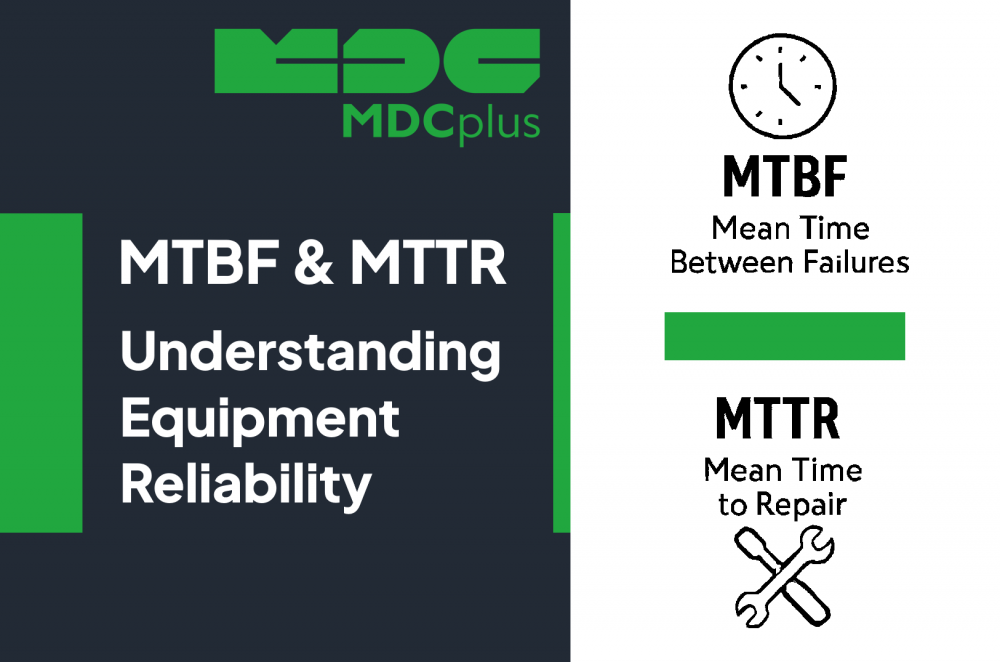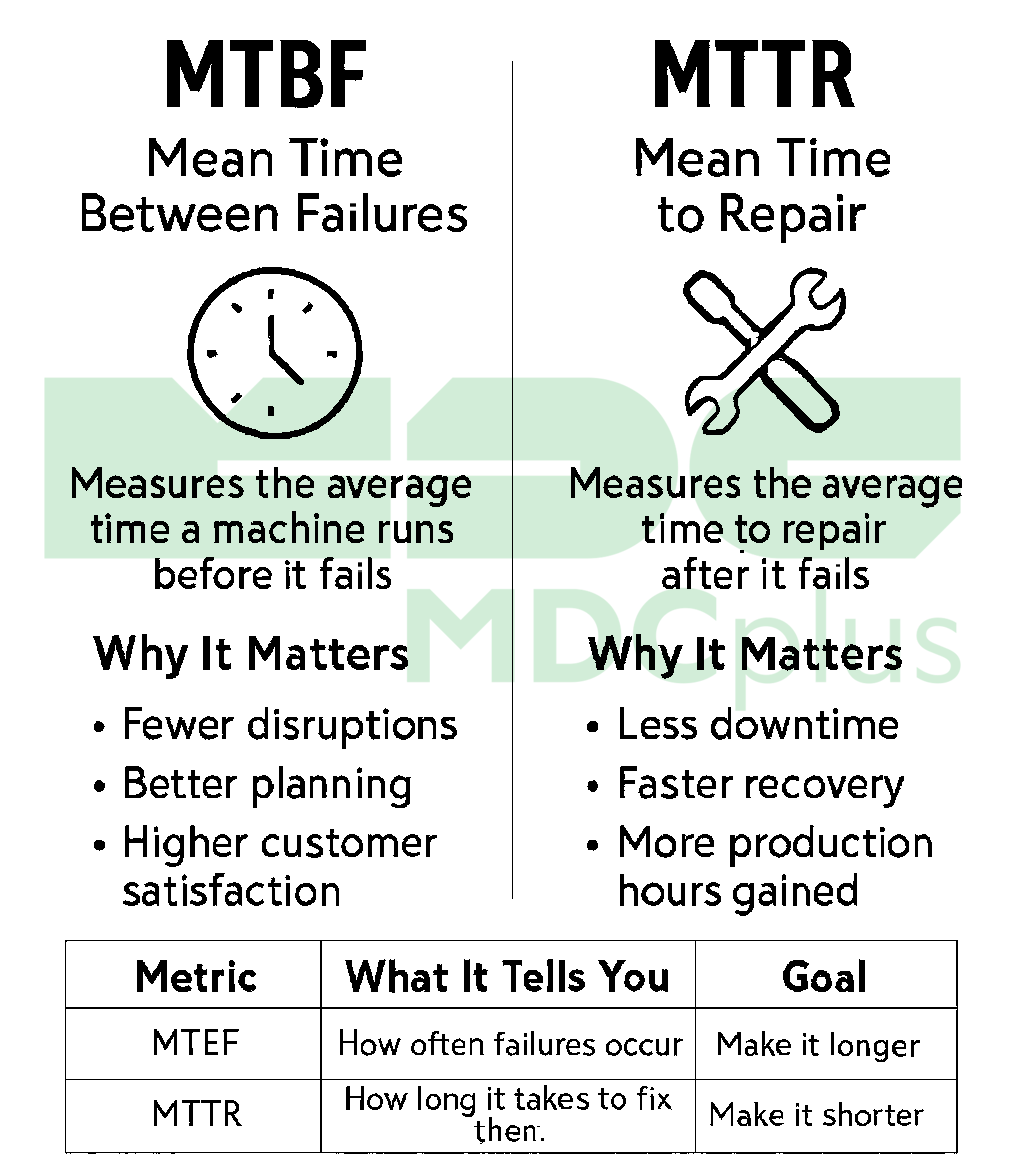MTBF & MTTR: Understanding Equipment Reliability
When a machine goes down on the shop floor, the cost isn’t just in parts or labor—it’s in lost time, missed deliveries, and frustrated customers. That’s why two simple metrics—Mean Time Between Failures (MTBF) and Mean Time to Repair (MTTR)—can offer outsized value to manufacturers looking to boost reliability and efficiency.
What Is MTBF?
MTBF stands for Mean Time Between Failures. It measures the average time a machine or system runs before it experiences a failure.
Think of it like this:
If your CNC machine runs for 1,000 hours before needing unplanned maintenance, and this pattern holds over time, then its MTBF is 1,000 hours.
Why It Matters:
MTBF gives you a high-level view of reliability. A higher MTBF means your equipment is running longer without problems. That translates into:
- Fewer disruptions
- Better planning
- Lower maintenance costs
- Higher customer satisfaction
In short: the higher the MTBF, the healthier your equipment—and your production schedule.
What Is MTTR?
MTTR stands for Mean Time to Repair. It’s the average time it takes to get a machine back up and running after a failure.
In real-world terms:
If it typically takes your team 2 hours to diagnose, repair, and restart a machine after a breakdown, your MTTR is 2 hours.
Why It Matters:
MTTR tells you how efficient your maintenance process is. A shorter MTTR means:
- Less downtime
- Faster recovery
- More production hours gained
- Less pressure on shift schedules
Reducing MTTR is all about speed and precision—from how fast you detect the problem to how quickly parts and skilled technicians are available. To sum thing up:
MTBF and MTTR: A Powerful Duo
When used together, MTBF and MTTR give you a complete picture of equipment health and response readiness:
| Metric | What It Tells You | Goal |
|---|---|---|
| MTBF | How often failures occur | Make it longer |
| MTTR | How long it takes to fix them | Make it shorter |
If MTBF is your "warning clock," MTTR is your "stopwatch." And in manufacturing, every tick counts.
How to Improve These Metrics
-
Preventive Maintenance: Scheduled checkups help increase MTBF by catching problems early.
-
Training & SOPs: Well-trained technicians and clear processes help reduce MTTR.
-
Spare Parts Readiness: The right parts on hand means less time spent waiting.
-
Digital Tools: Smart maintenance platforms can help you track downtime trends and plan repairs better.
In the world of manufacturing, uptime is everything. MTBF and MTTR may sound like technical jargon, but they’re actually practical tools that anyone from line operators to plant managers can use to drive performance.
Understanding them isn’t just good maintenance - it’s smart business.
About MDCplus
Our key features are real-time machine monitoring for swift issue resolution, power consumption tracking to promote sustainability, computerized maintenance management to reduce downtime, and vibration diagnostics for predictive maintenance. MDCplus's solutions are tailored for diverse industries, including aerospace, automotive, precision machining, and heavy industry. By delivering actionable insights and fostering seamless integration, we empower manufacturers to boost Overall Equipment Effectiveness (OEE), reduce operational costs, and achieve sustainable growth along with future planning.
Ready to increase your OEE, get clearer vision of your shop floor, and predict sustainably?

